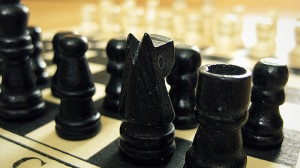 Gamification is a rising trend in the human resources space. After a Gallup study revealed that 70 percent of American workers are disengaged at work, everyone is looking for innovative ways to get that number down. Gamification in HR is one of the techniques leaders are exploring.
Gamification is a rising trend in the human resources space. After a Gallup study revealed that 70 percent of American workers are disengaged at work, everyone is looking for innovative ways to get that number down. Gamification in HR is one of the techniques leaders are exploring.
Many millennials grew up playing computer and video games, and these days, people play mobile games any chance they get. Gamification in HR is riding that wave, but with the goal of increasing engagement and making company processes more interesting for employees.
According to SHRM, there are two kinds of gamification: structural gamification and serious games. Structural gamification involves adding game elements (such as badges, levels, points, and leaderboards) to various activities and processes. Serious games, on the other hand, involve creating a game or simulation for reasons beyond just entertainment, like for training purposes. If you prefer visuals, here’s an infographic that explains these concepts: Playing to Win: Gamification and Serious Games in Organizational Learning.
So, is this a solution you should explore? According to a SHRM article and Gartner Inc. research, it depends on how well you execute it.
When executed well, some companies have reported great results from gamification, such as enhanced engagement, increased efficiency, and accelerated learning and development.
However, for many companies, it’s too soon to tell. In a study conducted by American Society for Training & Development, only a third of the companies that used gamification tracked its effectiveness. Further, Gartner Inc. predicts that 80 percent of gamified applications this year will fail to meet their stated objectives due to poor design.
That said, if your employees are craving some innovation, then you might want to consider experimenting with gamification in HR processes. Like with all initiatives, you should first identify an objective (learning, engagement, training, etc.). According to Gartner Inc., it’s important to focus on the motivation behind the effort rather than on the mechanics of the game (the points, the levels, the badges, etc.).
Here are some applications for gamification in HR and the workplace:
- Training and Learning: Revamp your training content by turning it into a game. Employees can work through levels to gain badges or points. Recognize the leaders at your town hall or honor them with enhanced responsibility.
- Administrative Processes: Onboarding documents and expense forms can be tedious. Reward points for timely completion to encourage efficiency.
- Wellness: Establish a system for employee wellness points and turn it into a challenge. Welbe is an enterprise solution that combines employee wellness data from wearables (like Fitbit and Jawbone) into a company dashboard, where you can see leaderboards and set challenges.
- Team Building: Encourage employees to get to know each other by adding a collaborative and competitive team element to events, requirements, and processes.
- Mission and Value Alignment: Reward employees with “culture points” or “value badges” for living by your company values. Give everyone the opportunity to recognize other employees when they go above and beyond in culture areas.
This article originally appeared on the CultureIQ blog.